Recent Articles
Popular Makes
Body Types
2016 Cadillac CT6 Road Test and Review
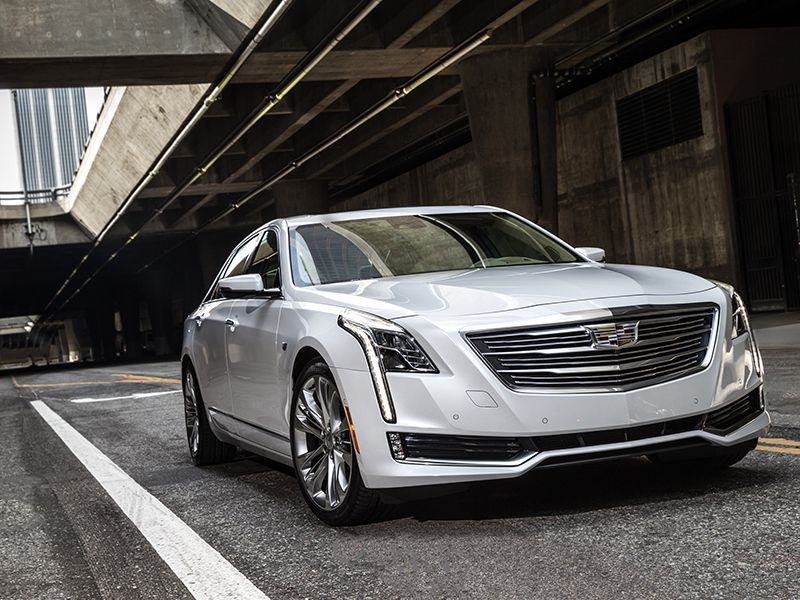
2016 Cadillac CT6 ・ Photo by General Motors
For years, the idea that a Cadillac could take on high-end cars from BMW, Mercedes, and Audi (or even Lexus) has been hard to take seriously. Cadillac has spent the last decade improving their game, with midsize sedans like the CTS, ATS, SRX and XT5 that are serious luxury contenders. But the one arena in which they haven’t yet dared to compete is the fullsize luxury sedan segment, rarified air occupied by the Mercedes S-Class, BMW 7 Series, Audi A8 and Lexus LS. (A bit ironic, actually, considering it was Caddy’s big DeVille that owned the luxury car segment back in the 1960s and '70s.)
Now, finally, Cadillac has a contender: The new CT6, a big car that shares many of the best attributes of Caddy’s volume-selling ATS and CTS models. The CT6 is a fitting flagship for the Cadillac brand, but can it really compete with the world’s best luxury sedans? Read on, my friends.
America vs. Germany
Any time a car has the Germans in its crosshairs, it needs to be great to drive—not just good, but truly great. I won’t keep you in suspense: The CT6 has what it takes. As big as this car is—it’s about 4 inches longer than the short-wheelbase Lexus LS460, but not long as the extended-wheelbase BMW 7 Series and Mercedes S-Class—the CT6 is remarkably agile, changing direction as quickly as a frightened marlin. And the CT6 doesn’t handle with the reluctant I’ll-do-it-if-I-have-to attitude of some big Germans; instead, the Caddy seems genuinely pleased to be tossed about on curvy roads. Test driving the CT6, my grimace of determined concentration—the expression I adopt in the hopes that other journalists will take me seriously—was continuously ruined by a distinct up-turning at the edges of the mouth. I’ve driven plenty of fullsize Caddys in my time, but never one that goes down the road this well. What can I say—it’s tough not to smile when America scores.
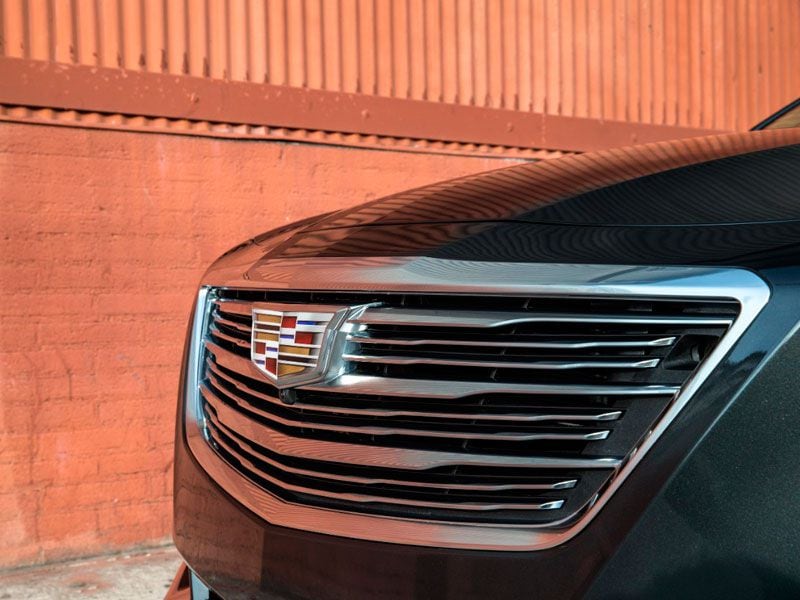
Photo by General Motors
The Mad Pursuit of Lighter Weight
The CT6’s secret—and this is a theme you’ll hear repeated in nearly every review of a General Motors vehicle these days—is light weight. Lighter vehicles handle better because there is less mass to change direction. They also save fuel, because a lighter car needs less engine (and therefore less fuel) to make it go.
GM has adopted light-weighting with a fundamentalist fervor, and in the case of the CT6, they’ve gone beyond the simple expedience of swapping steel for aluminum. Keeping the CT6’s cabin quiet was a high priority, and since aluminum does not attenuate sound as well as steel, it’s often a false weight economy: A given piece of aluminum, though thinner and lighter than steel of comparable strength, might require more sound insulation, and so the net weight rises. Caddy’s engineers looked at each piece of the CT6’s structure and decided which metal worked best. They dig scallops into ribs and engineered impossibly complex subassemblies that must have sent metal fabrication department into fits of rage, and the end result is a car that weighs half a ton less than a Mercedes S550.
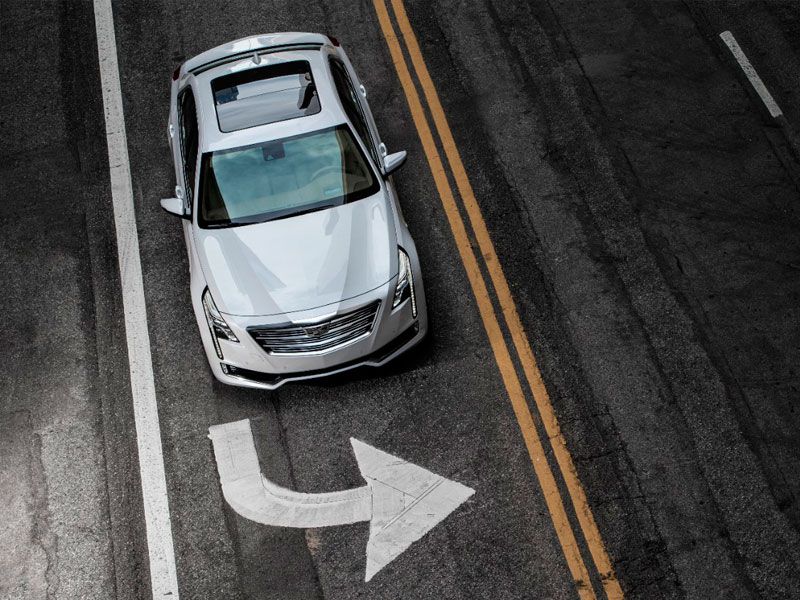
Photo by General Motors
Four Cylinders? How is That Even Possible?
While drivers will reap the benefits of the CT6’s light weight on their favorite curvy road, another advantage is the ability to use smaller, more fuel-efficient engines. Base power for the CT6 is a 2.0-liter 4-cylinder engine. For those to whom those numbers are meaningless, it wasn’t long ago that 2-liters were the engine of choice for small sedans (some of which struggled to merge onto the freeway). The CT6’s engine has a turbocharger, which boosts its output to 265 horsepower, again, not an eye-popping number for a car this big. But if you test-drive one, I’m sure you’ll be as surprised as I was at how quickly the 4-cylinder CT6 accelerates. Turbocharged engines do their best work in the middle end of their speed range, and the CT6’s 8-speed automatic transmission does a great job of keeping the engine on the boil. And that smart use of sound insulation keeps the 4-cylinder’s buzz-killing buzz away from occupants’ ears.
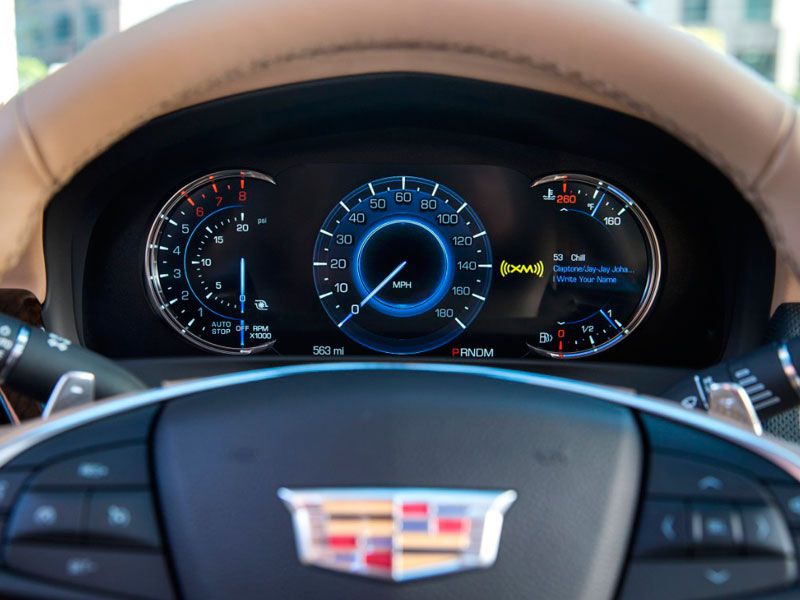
Photo by General Motors
Fuel Economy
In terms of fuel economy, the 2.0T engine works well: EPA estimates are 22 MPG city/31 MPG highway and 25 MPG combined, better than the most frugal versions of the BMW 7 Series (24 MPG combined) and Mercedes S550 (20 MPG combined). Both of those cars require premium fuel, by the way, while the 4-cylinder Caddy runs on regular. The 2.0T is the only version of the CT6 to come with rear-wheel drive, a plus point for driving purists and those who live in the Southwest, but Rust Belters may lament the availability of optional all-wheel drive. (AWD adds around 160 lbs of weight, and one can only ask so much of a small engine.) Personally, what I lament is that this powertrain is only offered in the lower two of the CT6’s four trim levels. It’s a great setup, and it seems a shame to deny it to those who want their CT6 with all the trimmings.
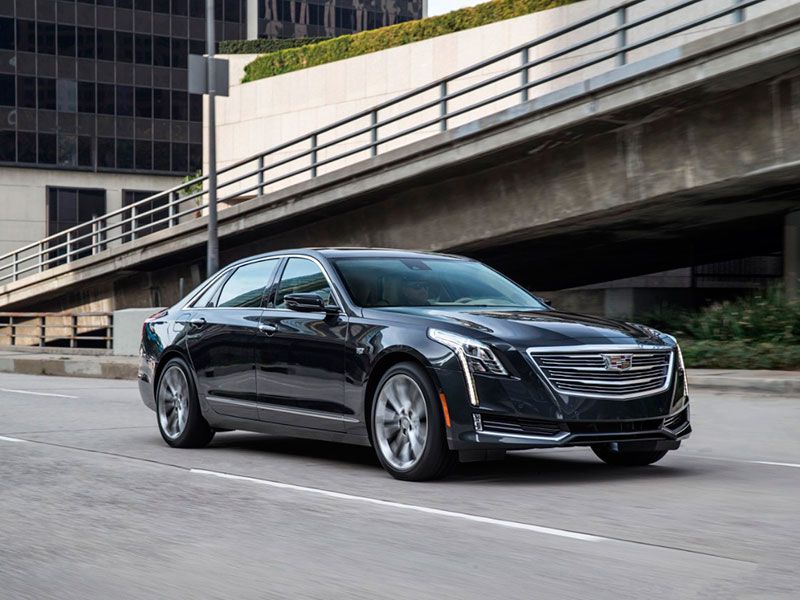
Photo by Cadillac
The Twin-Turbo Disappearing Act
At the high end is a 3.0-liter twin-turbo V6, which is excusive to the Cadillac brand. With 404 horsepower and 400 lb-ft of torque, this engine doesn’t make the CT6 accelerate so much as it makes it disappear. And yet for all this speed, the 3.0TT only gives up a slight fuel economy advantage: Even with all-wheel drive (standard on all V6-powered CT6s), EPA estimates are 18 MPG city/26 MPG highway and 21 MPG combined, still better than the V8-powered Mercedes S550—though, like the Benzo, the 3.0TT requires premium fuel.
This engine brings with it the option of GM’s magnetic ride suspension, which uses a special fluid in the shock absorbers that thickens when a magnetic field is applied. This means that Caddy engineers can tune the shocks for a compliant ride, then instantly stiffen them to provide better handling when driving conditions demand. Like any great technology, this one works like magic: You have a smooth-riding Cadillac that can stiffen up its suspension and corner like a performance car at a millisecond’s notice. (I know all about how this technology works, and yet it never ceases to amaze me.)
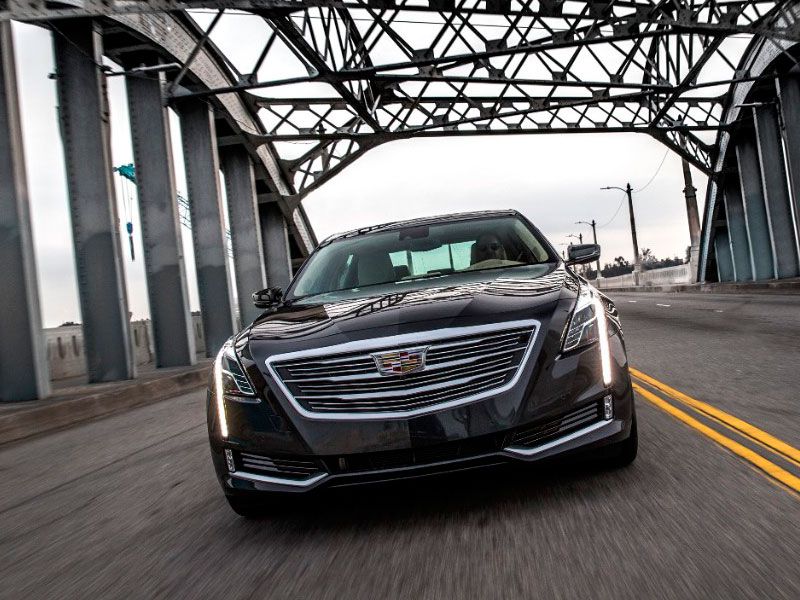
Photo by General Motors
Engineering Excites, But Styling is a Snoozer
As you can tell, I’m enamored by the CT6’s engineering. So now it’s time for the other shoe to drop: I think the CT6’s stylists dropped the ball. The CT6 is certainly not an unattractive car; it is clean, smooth and sleek, unadorned by gaudy trim bits often used to prop up a design on shaky aesthetic ground. Its slab sides, vertical taillights, and sideburn-like daytime running lights certainly give it a close resemblance to other members of the Cadillac family, something I think is important. But what the design lacks is pizzazz: It really doesn’t stand out. Compared to the understated CT6, the Mercedes S-Class and BM7 7 Series are almost pornographic in their opulence. They turn heads, while the CT6 fades into the background.
For what it’s worth, I’ve leveled this same criticism at the ATS and CTS. (The one vehicle on which this design language works, in my opinion, is the new XT5 SUV.) A luxury car has to make its owners feel as if they have accomplished something in life, and the CT6’s design simply doesn’t telegraph that message—and that’s too bad, because the buyers who pass it by based on its lack of visual appeal are missing out on a great car.

Photo by General Motors
Inside, a Perfect Balance
Things get significantly better inside the CT6, where Caddy’s designers have found a middle ground between the ostentatiousness of Mercedes and the generic sobriety of BMW. Genuine trim materials—wood, leather, carbon fiber—are used with sparing restraint, and well-thought-through controls eliminate that unpleasant tendency of modern-day luxury cars to bash their owners over the head with an overwhelming array of technology.
Not that the technology isn’t there: Like Audi, Caddy has supplemented the touch-screen input of their infotainment system with a touch pad for input. The system uses an array of one, two, and three-finger gestures, the explanation of which is best left to the owner’s manual; suffice it to say that it’s very easy to get the hang of the system. The only problem with the pad is its placement: Just ahead of the armrest, where it’s frightfully easy to brush your fingers against it, producing random inputs and surprise results.
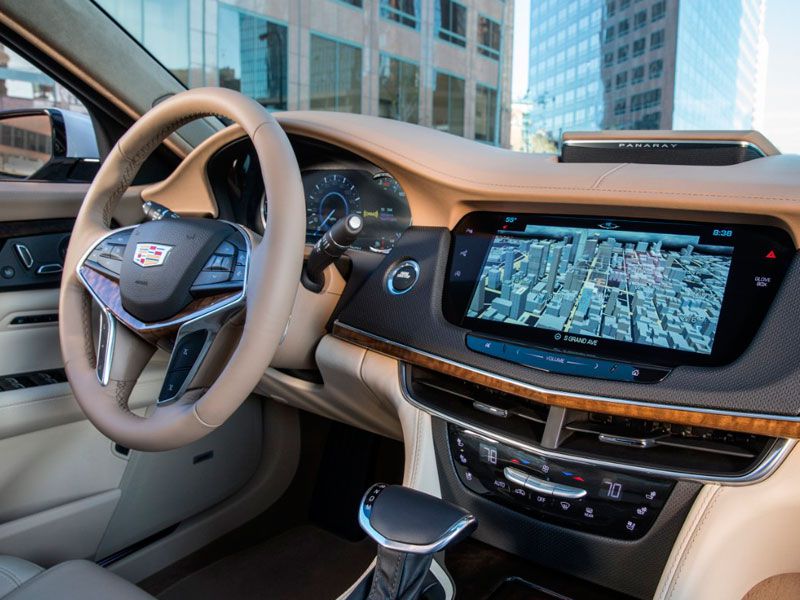
Photo by General Motors
Climate Controls are Tricky
I’m also not a big fan of the climate controls, which use a touch-sensitive panel instead of proper buttons; like the touch-pad, the panel senses the proximity of your skin, making it annoyingly easy to turn on the defroster when you really wanted to turn down the temperature. But at least Caddy has moved this panel away from the main touch-screen, eliminating the frustration of inadvertently turning the fan to artic-blast power when trying to program the navigation system, something that has happened to me more times in the ATS and CTS than I will admit to anyone other than my therapist.
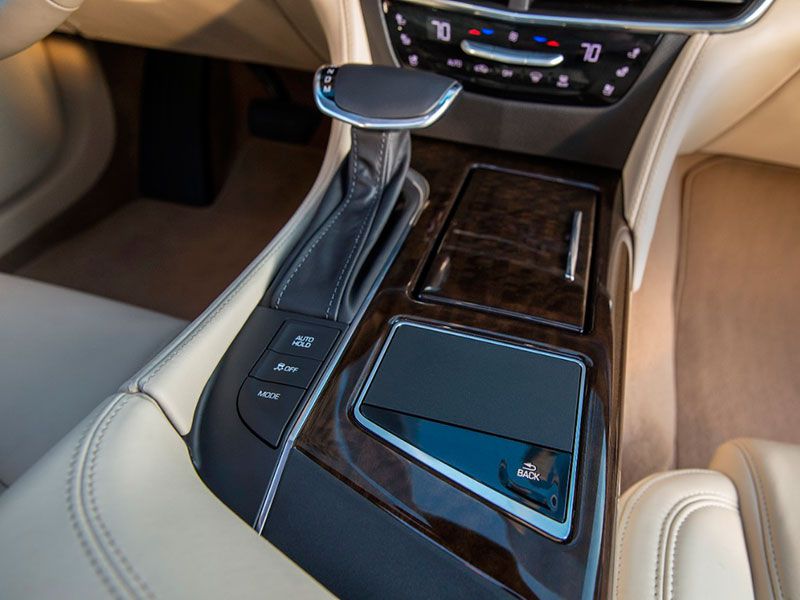
World's Coolest Rearview Mirror
I must talk about two bits of technology I really like. First is the video rearview mirror, which uses a camera to display a picture of the road behind without back-seat headrests (or heads) in the way. The camera provides a wider viewing angle than a traditional mirror, which takes some getting used to; if it drives you bonkers, you can flip a switch to return the mirror to its traditional function. Stick with it, and I think you’ll come to agree with me that this is the CT6’s killer app—even more so than the all-LCD instrument panel found in higher trims and the optional night-vision camera which detects pedestrians and animals. (Slick, but we’ve seen these features in other luxury cars.)
Vying for second place is the optional rear-seat entertainment system, which has twin 10-inch LCD screens. Like other General Motors cars, the CT6 comes with built-in 4G LTE internet connectivity—enough bandwidth, Caddy says, to stream Netflix movies. Anyone fancy a binge-watch at 70 MPH?
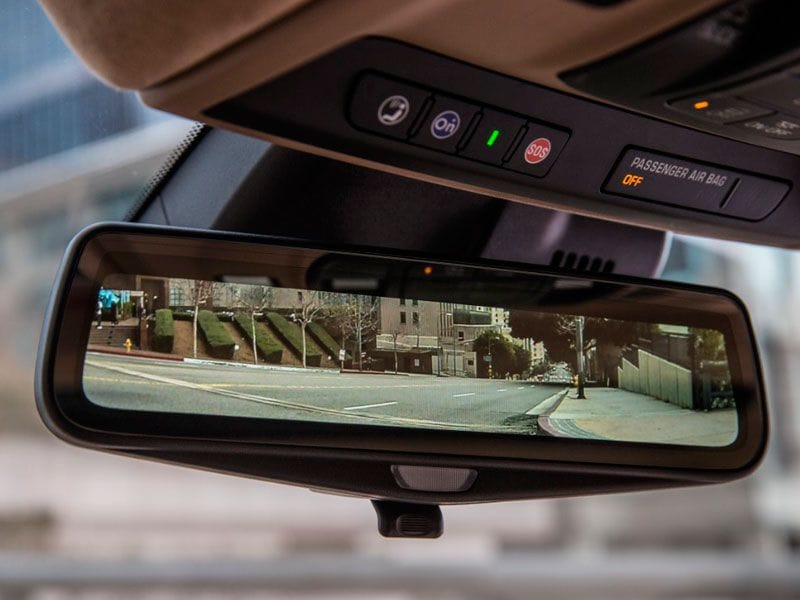
Photo by General Motors
Does Size Matter?
Big German luxury cars traditionally come in short- and long-wheelbase lengths; in their latest iterations, Mercedes, BMW and Audi are only importing the long-wheelbase versions of the S, 7 and A8 to the United States, though Lexus still offers the LS in two sizes. Generally, all of that extra length adds rear-seat legroom, since these cars are intended (in the home market, at least) for the chauffer-driven set.
Caddy has gone with a shorter wheelbase, which means the CT6 doesn’t offer the stretch-out legroom of the big German cars. That could be an issue for very tall passengers, especially those who opt for the first-class reclining seats: As the seats move back, legroom shrinks. On the plus side, the recliners come with a massage function. Mmmmmmm!
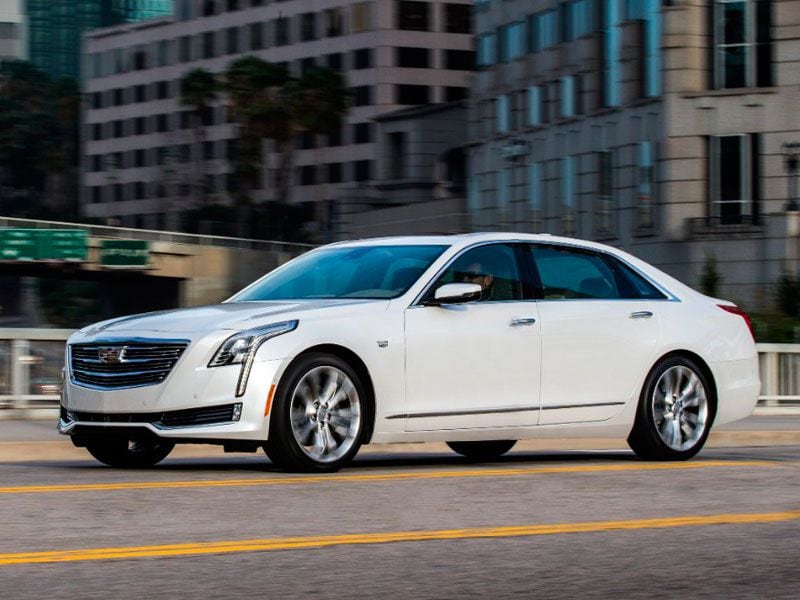
Photo by General Motors